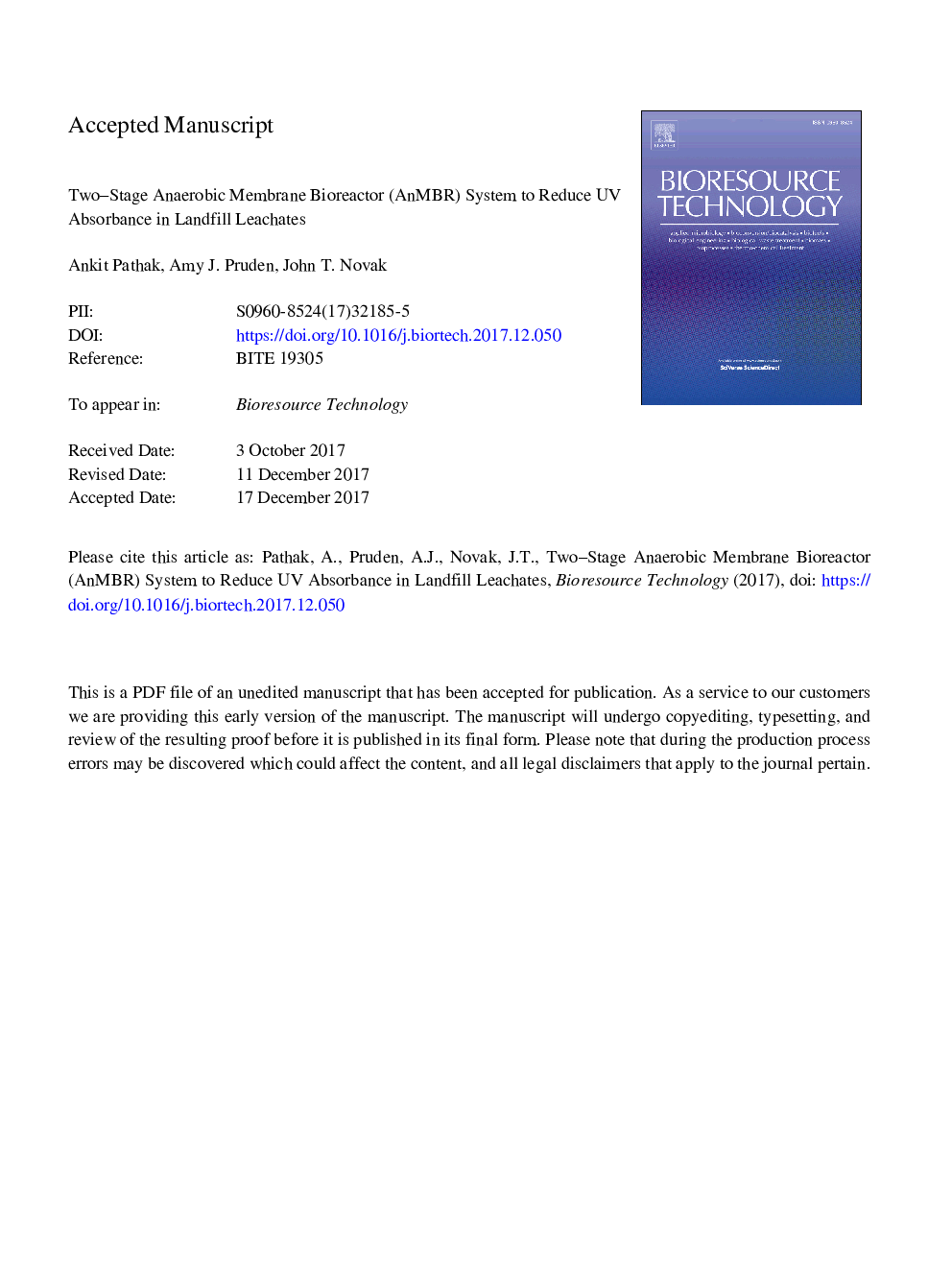| Article ID | Journal | Published Year | Pages | File Type |
|---|---|---|---|---|
| 7068466 | Bioresource Technology | 2018 | 27 Pages |
Abstract
Landfill leachate typically contains UV-quenching organics, which hinder disinfection at POTWs. This study tested a 2-stage submerged AnMBR for the degradation of UV-absorbing compounds in landfill leachate. Leachate was treated in a thermophilic reactor (55â¯Â±â¯2â¯Â°C) followed by a mesophilic AnMBR (37â¯Â±â¯1â¯Â°C), with HRTs of 25â¯Â±â¯5â¯days and 40â¯Â±â¯5â¯days respectively. Solids were not wasted, in order to promote biomass accumulation. COD, Organic carbon, and UV254 absorbance were monitored over 13â¯months of operation. Known UV-quenching compounds, including humic acids, fulvic acids and hydrophilic matter, were reduced by 55%. Molecular weight distribution analyses revealed that the thermophilic reactor hydrolyzed organic carbon >100â¯KDa into smaller fractions, which were removed in the AnMBR. The system consistently removed 50% of the total UV absorbance. This promising, new enhanced biological process may provide landfills with a feasible pretreatment alternative to expensive chemical oxidation or RO processes before discharging leachate into sewers.
Keywords
Related Topics
Physical Sciences and Engineering
Chemical Engineering
Process Chemistry and Technology
Authors
Ankit Pathak, Amy Pruden, John T. Novak,
